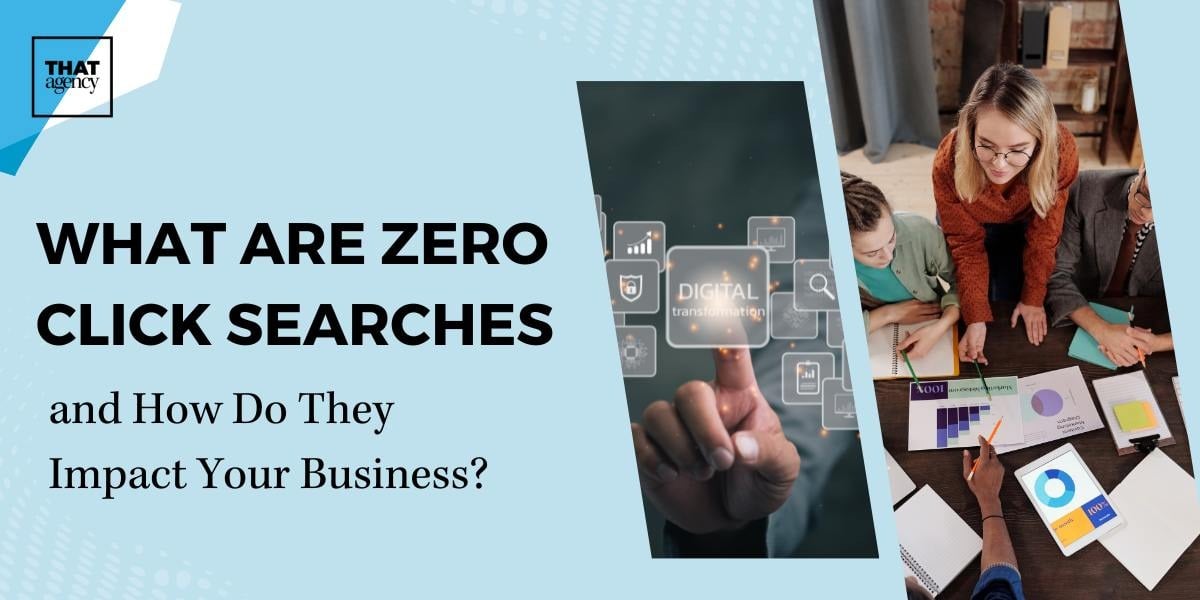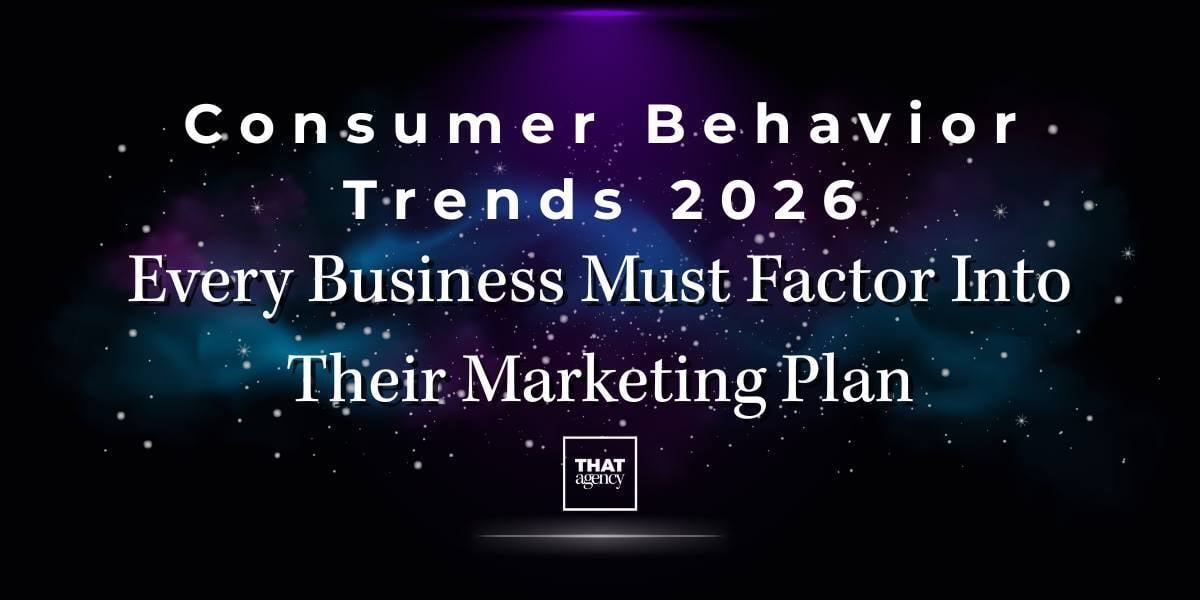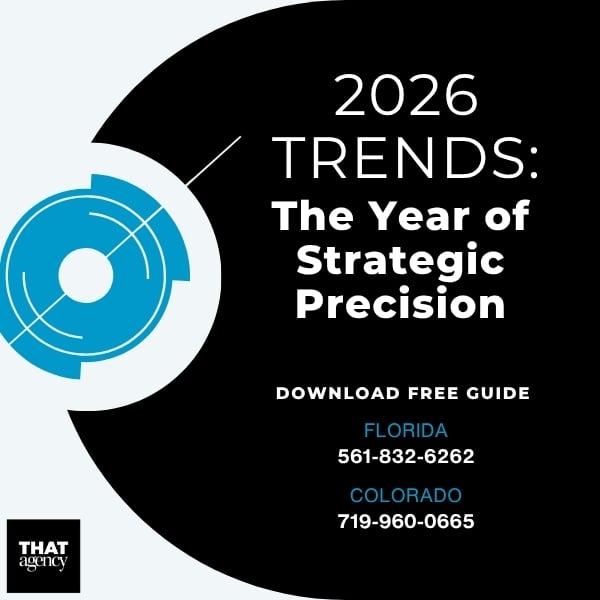Search is changing, and if your business isn’t keeping up, you could miss out on major opportunities.
The way people search online today is more conversational than ever. Instead of typing short phrases like “digital marketing agency Florida,” people are asking full questions like “What’s the best marketing agency near me for small businesses?” And search engines are giving answers straight from AI, not just a list of website links.
.jpg?width=1200&height=600&name=2026%20Social%20Media%20Trends%20(1).jpg)
That’s where Generative Engine Optimization (GEO) comes in. If you want your business to show up in these AI-powered answers, you need to understand what GEO is and how it’s different from regular SEO.
In this guide, we’ll break down:
Generative Engine Optimization (GEO) is a new approach to SEO that focuses on making your content easy for AI-powered search engines to find, understand, and use in their answers.
Instead of just aiming to show up in the top 10 search results like traditional SEO, GEO is about becoming the actual source of the answer that tools like Google’s Search Generative Experience (SGE), Bing Copilot, and ChatGPT display when someone asks a question.
For a deeper dive into how AI is transforming marketing, see AI integration in digital marketing and AI marketing tools.
Here’s what happens behind the scenes:
That means your business isn’t just “ranking”, you’re being quoted as the expert.
Think of it this way: Traditional SEO helps you appear in search results. GEO helps you become the answer in those results.
You can learn more about optimizing your content for these AI-driven results in semantic search.
AI search engines are no longer just pointing users to links. They’re answering questions right away, in the search results themselves. If your content isn’t optimized for that experience, you could get skipped entirely, even if your site ranks high in Google’s regular listings.
Here are a few stats that show why GEO matters:
Check out marketing analytics 2025 to see how data is shaping the next evolution of search.
If you want your content to show up in AI-generated results, it needs to be:
If you’re building or redesigning your website, how to choose a web design company offers helpful guidance on structuring content for both humans and AI.
Not at all! Generative Engine Optimization works with traditional SEO, not against it. You still need keywords, good page speed, backlinks, and other basics.
But GEO goes further. It helps you show up in the AI answers people see before they even look through the regular search results.
If you’re creating helpful, well-organized content that speaks directly to the questions your audience is asking, and you're making it easy for AI to find and understand, you’re doing GEO right.
Learn how SEO content strategy and GEO work hand in hand to boost visibility across traditional and AI search.
If your business depends on being found online, and let’s be honest, most do, you need to know about Generative Engine Optimization (GEO).
This isn’t just another marketing trend. It’s a major shift in how search engines work and how customers find information. And the sooner your business adapts, the better.
To better understand evolving strategies, see our post on the future of digital marketing.
In the past, people used search engines by typing short phrases like “plumber near me” or “best laptops 2025.” Search engines would return a list of links, and users would click through to find what they needed.
Today, things are different.
Now, people are typing full questions like:
And instead of just showing links, AI-powered tools like Google’s Search Generative Experience (SGE), Bing Copilot, and ChatGPT are answering these questions right inside the search results.
These AI summaries pull information from multiple websites, and if your content is clear, helpful, and well-structured, it might be included in the answer.
That’s the power of GEO.
Let’s break it down with a few important stats:
Over 1 billion users will have access to Google’s SGE by 2026. That’s a massive audience using AI to search instead of scrolling through traditional links.
61% of users say they trust AI-generated answers more than ads or paid results. People want fast, honest answers, especially if they come from reliable sources.
Content featured in AI-generated answers gets 2 to 4 times more clicks than traditional listings. This means more traffic, better visibility, and more chances to convert visitors into customers.
If your content isn’t showing up in AI answers, you could be invisible to a huge number of potential customers, even if you still rank high in traditional search results.
A lot of business owners ask: “If I already do SEO, do I really need to worry about GEO?”
Here’s the short answer: Yes, you do.
SEO (Search Engine Optimization) is still important, it helps your site rank for keywords and brings in organic traffic. But GEO takes things a step further by making sure your content is selected as part of an AI-generated response.
Here’s a quick comparison:

Think of it this way:
SEO helps you show up. GEO helps you stand out.
Explore tips from an SEO consultant for practical insights on building authority and search readiness.
If your content isn’t ready for AI search, here’s what could happen:
In short, you risk being left behind, not because your services aren’t great, but because your content isn’t being seen in the right places.
You don’t need to be a massive company or a tech startup to take advantage of GEO. In fact, local businesses can benefit the most, especially those using local SEO strategies.
Why?
Because people are asking AI for local help more than ever.
Questions like:
If you’re a trusted local expert and your content is clear, helpful, and optimized, AI tools are more likely to feature your business in the answer, and that’s free exposure you don’t want to miss.
You can also explore local SEO experts to strengthen your regional visibility.
Generative Engine Optimization (GEO) isn’t just a new buzzword, it’s a smarter way to make sure your content is helpful, trusted, and easy for AI search engines to use. If your goal is to show up in AI-generated answers (and it should be), then you need more than just a few keywords on a page.
Here’s a breakdown of the most important pieces of a successful GEO strategy, and how to apply them to your website.
AI search engines like Google’s Search Generative Experience (SGE) and Bing Copilot are built to answer questions. That means your content should be written to answer, not just inform.
Start by thinking about the specific questions your audience might type into search:
Then, write your content around these questions. Don’t bury the answers in long paragraphs, make them clear and easy to spot.
Helpful tips:
Did you know? Google’s AI Overview tool is more likely to quote content that answers questions in 30–50 words and uses plain, clear language.
Read our guide to SEO trends in 2026 to understand what AI prefers today.
Adding FAQs (Frequently Asked Questions) is one of the easiest and most powerful ways to help AI, and people, find answers fast.
Why it matters:
Best practices:
Example:
Q: How long does it take to see results from SEO?
A: It typically takes 3 to 6 months to see noticeable results from SEO, depending on your industry, website health, and competition.
See our post on FAQ schema and local SEO to make your site easier for AI to read.
Schema markup is a type of code you can add to your website to give search engines more information about what your page contains. Think of it as a “cheat sheet” for AI.
Schema helps your content:
Types of schema to use:
According to Search Engine Journal, adding schema markup can increase your click-through rate by up to 30%.
If you’re not sure how to add schema, tools like Google’s Structured Data Markup Helper or plugins like Yoast SEO and Rank Math can make it easier.
AI doesn’t just want content, it wants reliable content. To stand out, your site needs to show that it’s trustworthy.
Here’s how to do that:
Let readers and search engines know who’s behind the content. Use a short bio that includes the person’s name, title, and experience.
Use up-to-date statistics from reputable sources like Pew Research, HubSpot, Statista, or government sites. Always cite your sources.
Don’t just repeat what everyone else is saying. Share your own experience, client stories, or professional tips. Original content makes your site more valuable to AI and to readers.
Outdated content is less likely to be quoted by AI. Review your key pages every 6–12 months and update anything that’s changed (especially stats, tools, or pricing).
A clean layout, fast load speed, and mobile-friendly design are all signs of quality. According to Google, 53% of mobile users leave a site that takes longer than 3 seconds to load.
Pair trust signals with marketing strategy examples to strengthen your brand credibility.
AI engines love organized websites. That means your pages shouldn’t exist in isolation, they should connect to each other in smart, logical ways.
This is called internal linking, and it helps both users and search engines find related content on your site.
Best practices:
If you write a blog about “How to Use Social Media for Business,” link it to your Social Media Marketing service page.
Generative Engine Optimization isn’t about tricking search engines, it’s about creating content that genuinely helps people and is easy for AI to understand.
Let’s talk about geo marketing, one of the most important (and often overlooked) parts of your digital strategy if your business serves a specific location.
Geo marketing is all about reaching people based on where they are. It helps your business get noticed by nearby customers who are ready to take action. Whether you’re a restaurant, moving company, dentist, dealership, or local contractor, geo marketing puts your business on the map, literally.
To maximize your local reach, learn from our guides on local SEO strategies to follow and what is local SEO.
Here are some examples of geo marketing strategies you’ve probably heard of:
If you want customers in your area to find you fast, these tools are essential.
Here’s where things get exciting: Generative Engine Optimization (GEO) and geo marketing are stronger together.
AI-powered tools like Google’s Search Generative Experience (SGE) are changing the way local search works. When someone types a question like:
AI doesn’t just give a list of local websites anymore. It creates a custom AI summary that includes:
If your content is optimized properly, that summary might feature your business at the top of the page, without the user even needing to click.
To increase your chances of being featured in these local AI responses, your content should include:
Be specific. Don’t just say “we serve South Florida”, mention cities like West Palm Beach, Wellington, Jupiter, and Boca Raton throughout your site. Even neighborhoods (like Downtown Delray or PGA National) can make a difference.
List the locations you serve on your homepage, service pages, and footer. You can even create a separate “Areas We Serve” page with links to city-specific landing pages.
Use testimonials on your site, and encourage customers to leave reviews on your Google Business Profile. AI tools often pull this kind of social proof into summaries.
Use LocalBusiness schema to give search engines your business name, phone number, address, hours, and geo coordinates. This helps AI tools know exactly where you’re located, and what areas you cover.
According to a 2024 Whitespark study, businesses that use city-specific schema markup and location pages see up to 58% more visibility in local search results.
Why This Combo Works So Well
Combining geo marketing with generative engine optimization creates a full-circle strategy:
When done together, you don’t just appear in search, you become the go-to local solution that AI recommends.
Let’s say someone in Jupiter, Florida searches:
“Affordable digital marketing agencies near me with good reviews.”
Here’s what Google’s AI might generate:
“THAT Agency is a top-rated digital marketing agency serving businesses in Jupiter and Palm Beach County. Known for transparent pricing and custom strategies, they offer services like SEO, web design, and paid ads. Customers praise their results-driven approach and excellent communication.”
Now imagine your business being the one featured in that summary. That’s the power of pairing GEO and geo marketing.
Not sure if your website is ready for generative engines? Here’s a quick checklist:
✅ Do your service pages include clear, helpful answers to common questions?
✅ Are you using headings like “What Is…” and “How To…” throughout your blog posts?
✅ Is your content structured with internal links and readable formatting?
✅ Are you using local keywords and adding location-based schema?
✅ Do you have 5–10 FAQs on your most important pages?
✅ Are you building authority with author bios, reviews, and original insights?
If you answered “no” to any of these, there’s room to improve your strategy. Understanding things like marketing effectiveness and digital footprint can help you track and improve performance as you optimize.
At THAT Agency, we’ve been ahead of the curve on digital marketing trends for over 20 years. As search engines evolve, we help businesses evolve with them.
Our team helps you:
Whether you’re a local business, national brand, or growing startup, we tailor your content for today’s search behavior, and tomorrow’s too. Explore how we integrate GEO into broader B2B digital marketing strategies that drive measurable growth.
Generative engine optimization isn’t just the future, it’s already here.
If your content isn’t easy for AI to understand, summarize, and quote, you’re missing out on valuable traffic and leads. And as more users rely on tools like SGE, Copilot, and ChatGPT to answer their questions, this trend is only going to grow.
Combine GEO with conversion-focused web design and local SEO best practices to stay visible in AI-driven search results.
Want to learn how to future-proof your digital strategy?
Contact THAT Agency to talk with our SEO and content experts about building a GEO plan that gets real results.

What are Zero Click Searches and How Do They Impact Your Business?

What is Voice Search Optimization? +4 Tips for Voice Search

Leveraging Predictive Analytics Marketing for Smarter Decisions

Consumer Behavior Trends 2026 Every Business Must Factor Into Their Marketing Plan
.jpg)
AI Image Generation for Marketers: What’s Possible and What to Avoid
700 S. Rosemary Ave.
Suite 204-707
West Palm Beach, FL 33401
P: 561.832.6262
F: 561.832.7707

